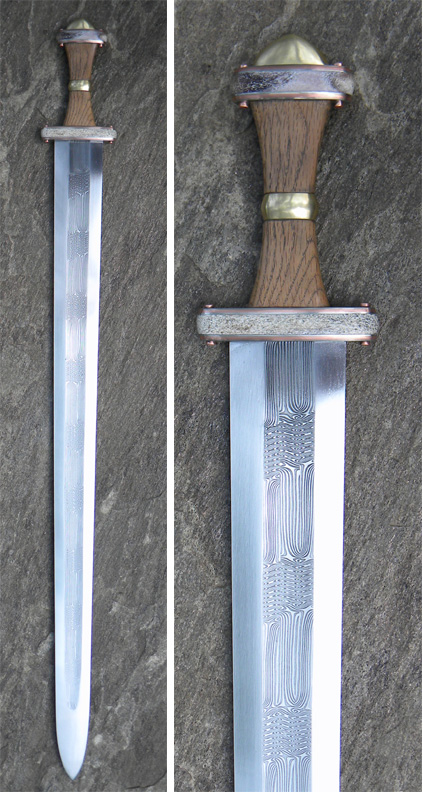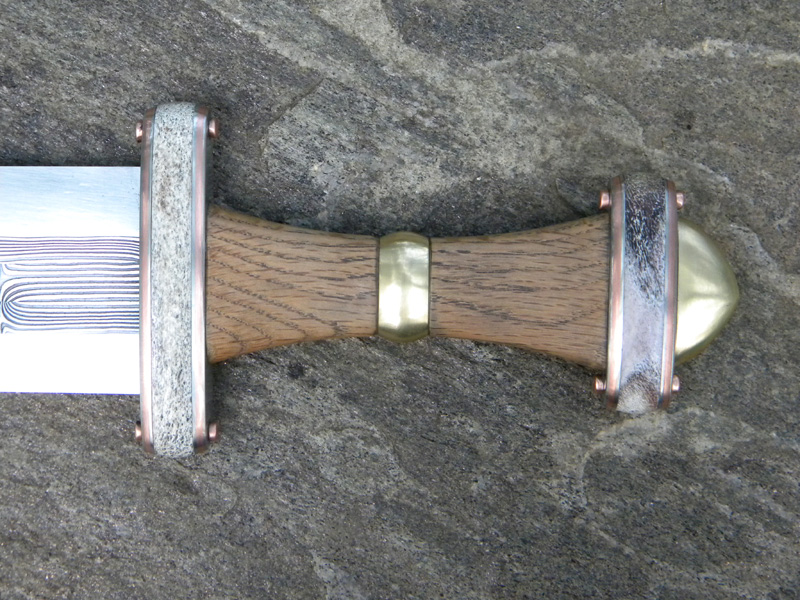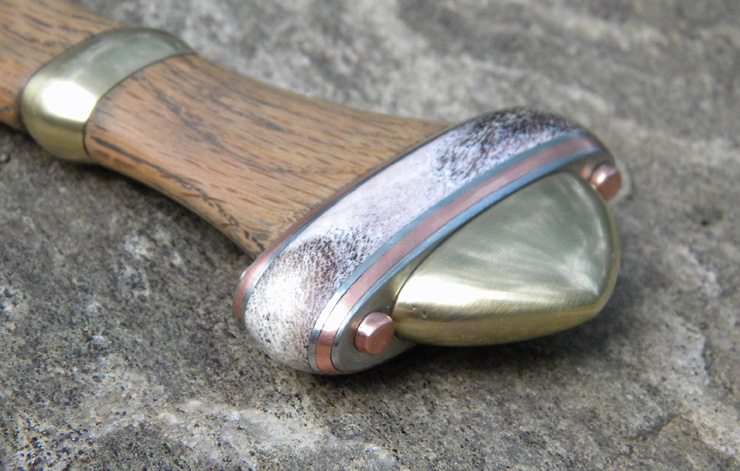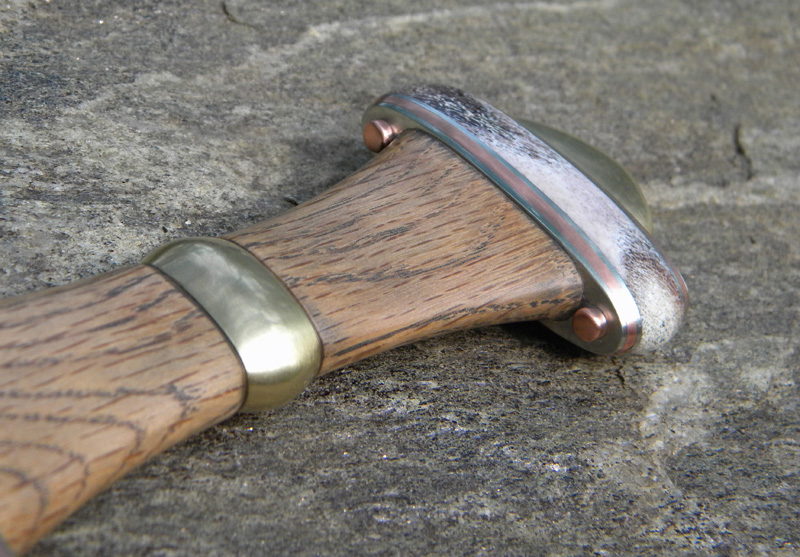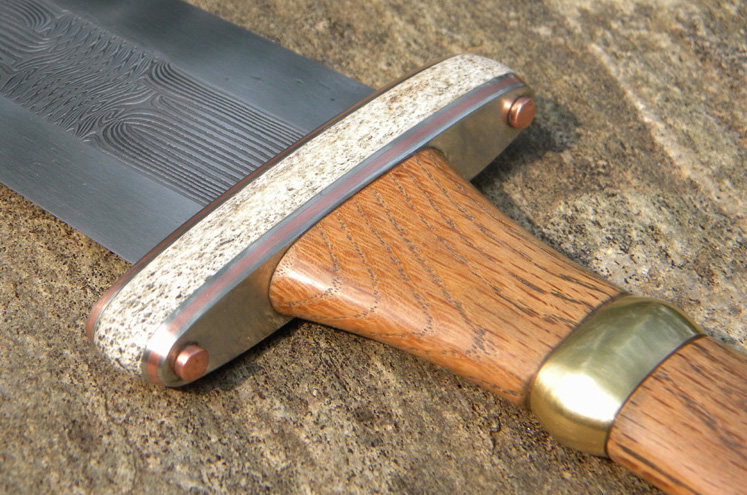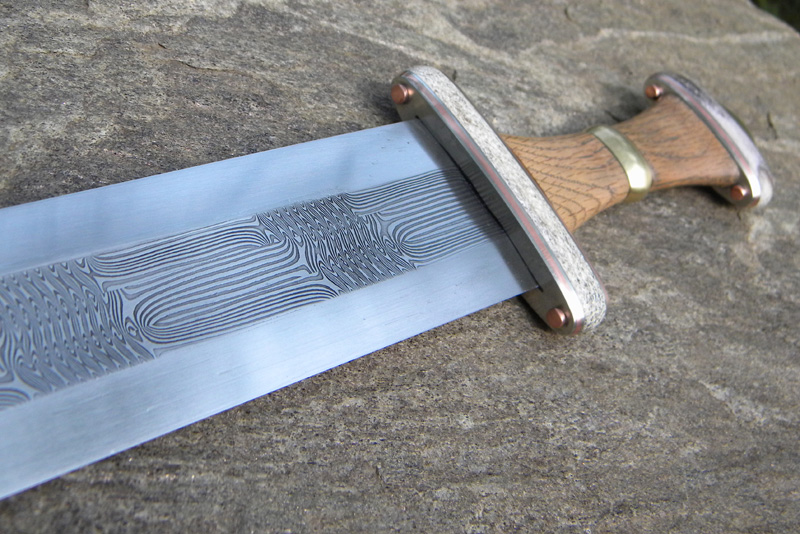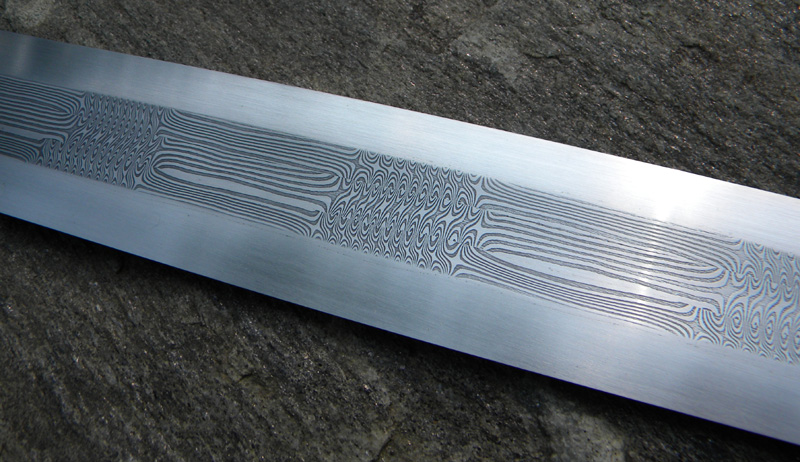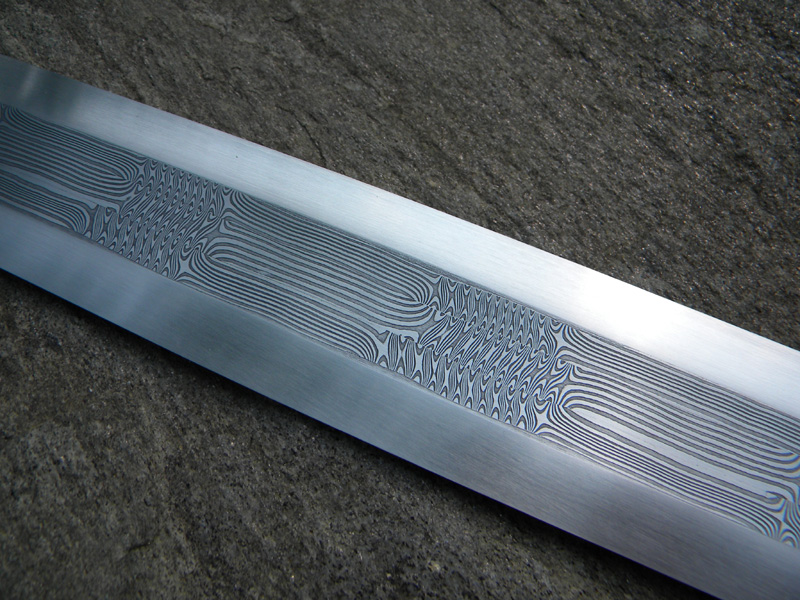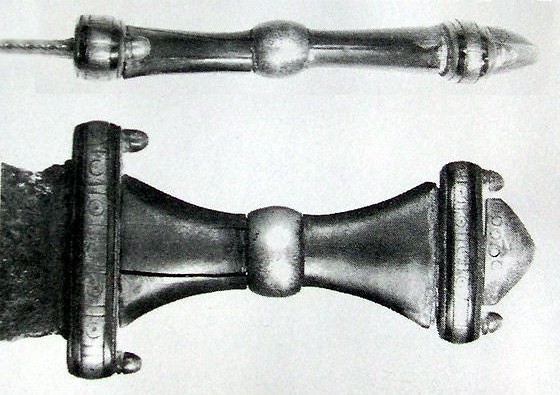I miss estimated how much the material would compress during the welding and forging process which left me with a blank that was a touch on the thin side, so I used a fullering tool to widen the blade, and then forged in my fuller and edge bevels. Since I was trying to gain as much width as I could the pattern in the twists distorted more then I would have liked to see, but I think it still works and is attractive in it's own special way:) Due to getting the blank so close to final size while forging, and the cleaning up the scale I was pretty close to my final dimension when I went to heat treat the blade. Which is a good thing, and a not so good thing at the same time. When heat treating blades that are super thin, and especially ones that have twisted pattern welded rods in them, the blade like to go crazy and twist and distort. I was able to get the blade back to really close to being straight, but there are a few places that the edge wanders. This is mostly limited to one side, and is below the area that would have been used from cutting, and overall the blade is as straight as the handful of originals that I've gotten to handle. On the curious side of heat treat as well is I got some splotchy hamon activity on some areas of the edge, mainly the tip, but not on others. I did a file test prior to tempering and the whole edge skated really nice, and I did a brass rod test after honing and the edge held up fine. The aesthetics of the hamon didn't show until after I had my final finish on the steel.
The handle was loosely inspired by an image that a member posted a long time ago on here, and I thought that it would fit the blade, and due to the "simple" nature it would make a good first attempt at building this kind of hilt. I decided to make a layer of nickel silver, copper, nickel silver, to encase some antler on either side for the guard and upper guard. Then I chose to contrast the coloring with brass for the bead in the grip, and the pommel. It was an interesting process to say the least, and I think it came out looking pretty good. I chose Oak for the grip, I could tell from the original that it was most likely exposed wood, so I ran with it and was questioning all the combinations until it all came together.
I think the most interesting portion of this sword is the handling. Here are some specs before I chat about it:
Length overall: 38.5"
Blade length: 32.5"
Blade width at guard: 2.25"
Point of balance: 7" forward of guard
Weight: 1lb. 9oz.
The sword is light, very light, it is fast, and it has a very powerful feel and presence in the hand yet it is very controllable and alive. There is a great deal of flexibility at the tip and cutting area, but at the same time I wouldn't call it wimpy at all. I think that this blade would do very as a light fast cutter, similar to the wounds that I have heard where the most common during early conflicts. I don't think this blade would do well with getting slammed into shields or armored opponents, but it really is for more of a scalpel type use, delivering a fine precise cut to the right location to do the job it needed to do. The edges of the sword at of high carbon steel honed to a fine apple seed cross section. I left just a touch more material at the prime cutting location to give some extra stability to the edge.
I am always conflicted when trying to price my work, this is a beautiful and unique sword and since I finished it last night it has grown on me, I feel that I need to look at it with fresh eyes to determine a proper value. At any rate it is a sword full of character, and is looking for an owner with the same. If you feel it is a must have addition to your collection please get in touch with an offer if I haven't listed a price and I will take it into consideration.
